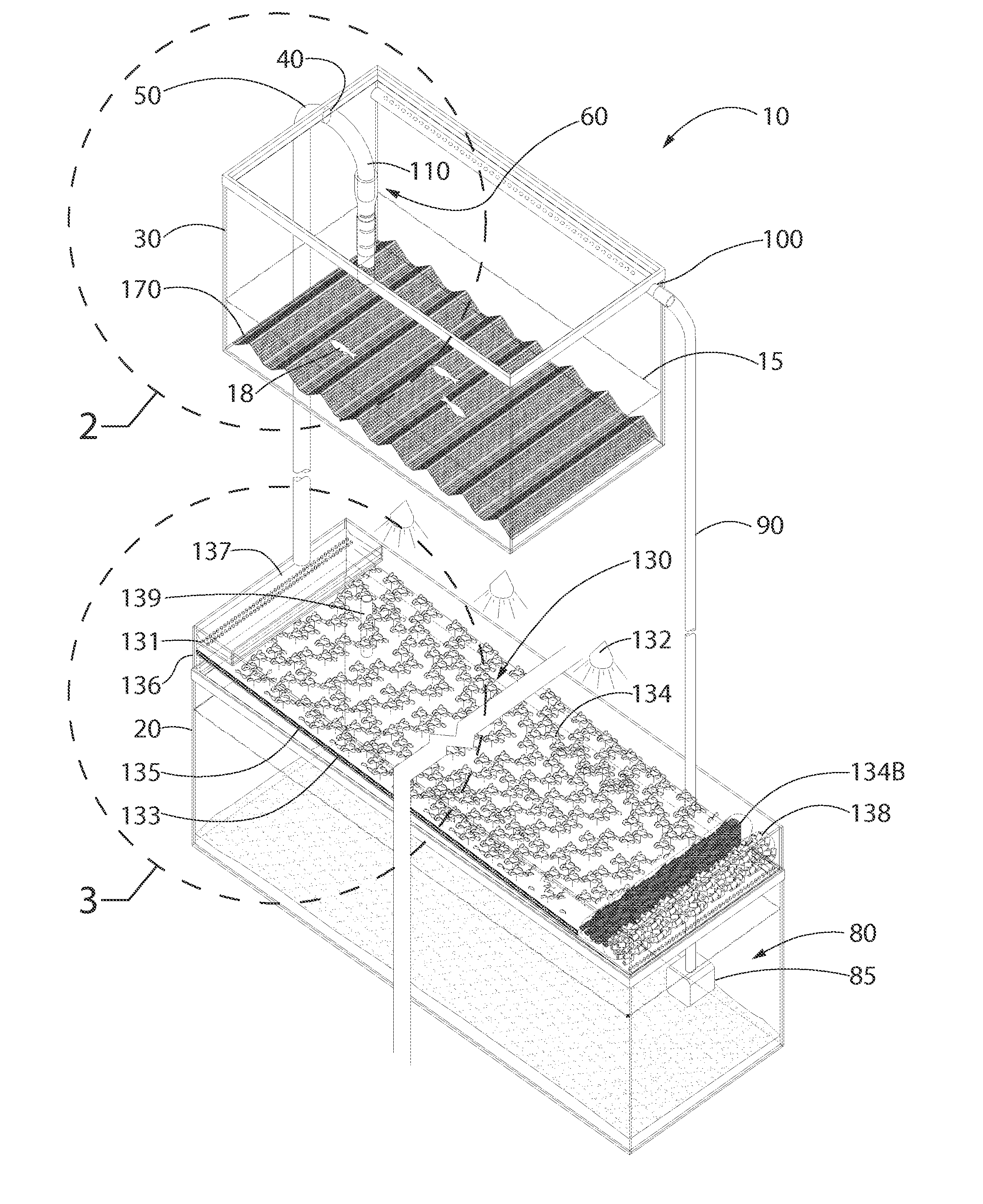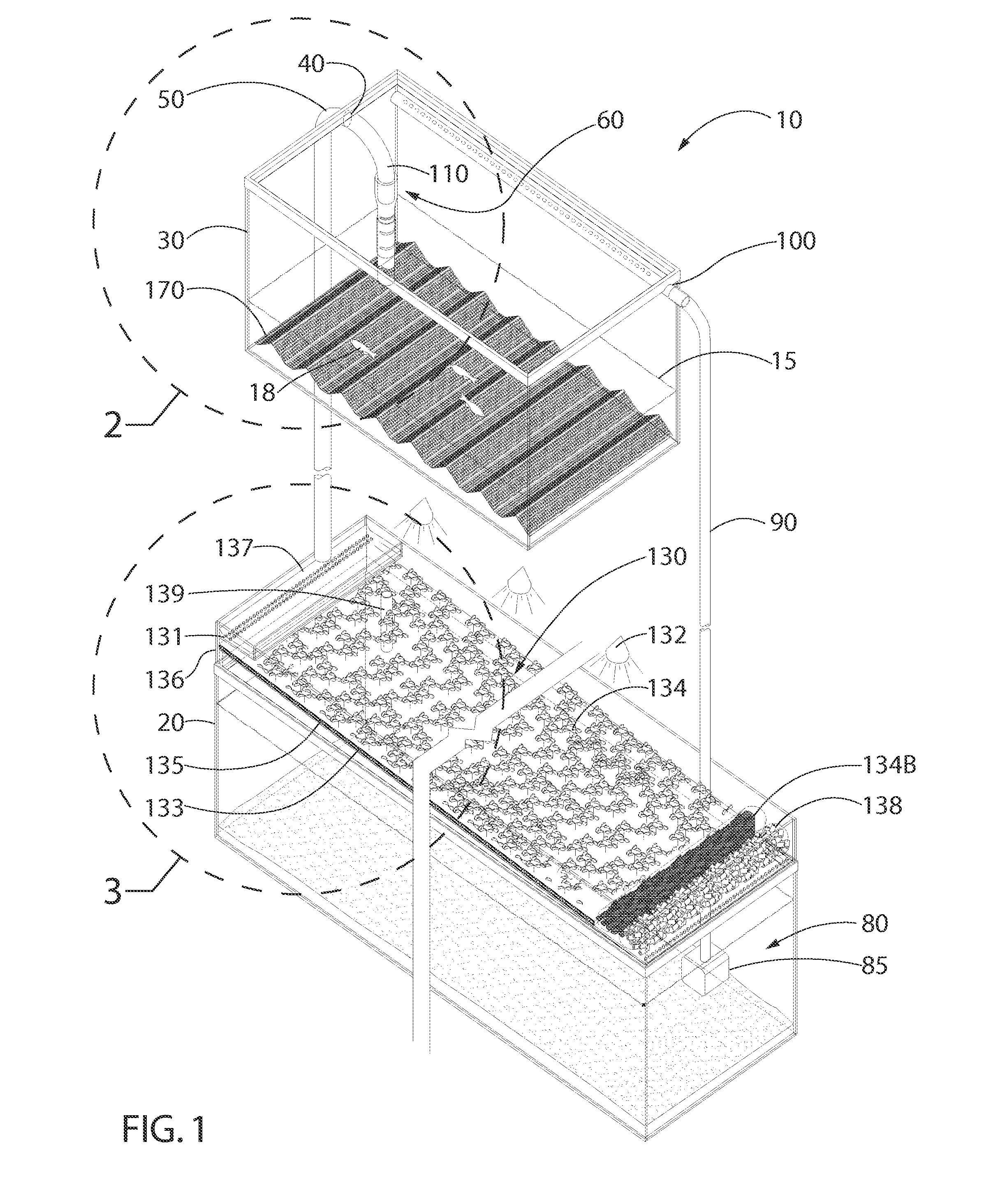Self Cleaning Aquarium System
- Summary
- Abstract
- Description
- Claims
- Application Information
AI Technical Summary
Benefits of technology
Problems solved by technology
Method used
Image
Examples
first embodiment
[0048]FIGS. 1-3 illustrate an aquarium system 10 for containing water 15 and aquatic life 18 therein. The aquarium system 10 includes a reservoir 20 and an aquarium 30 that is mounted generally above the reservoir 20. The aquarium 30 and the reservoir 20 may be mounted together as part of the same unit (not shown), or separately mounted, provided that the aquarium 30 is fixed generally above the reservoir 20 so as to allow siphoning of the water 15 from the aquarium 30 to the reservoir 20 as described in more detail below. The aquarium 30 and the reservoir 20 are both capable of water-tight containment of liquids, and can be formed in any desired shape and of any suitable material, such as acrylic, polycarbonate, glass, plastic (either opaque, translucent or transparent, as desired), or the like.
[0049]The aquarium 30 has an outlet 40 in liquid communication with the reservoir 20 through an outlet conduit 50. The outlet 40 is located at a maximum water level 120 inside the aquarium 3...
second embodiment
[0056]In the invention, illustrated in FIGS. 4-6, the aquarium 30 takes the shape of an elongated, substantially transparent tube 150, preferably having at least one opening at a top side thereof that includes a removable cover 156 (FIG. 4 and FIG. 7). The tube 150 may preferably include a circular cross-section, as illustrated, but may include any other cross-sectional shape including square, oval, teardrop, rectangular, irregular, trapezoidal, or the like. Further, such a tube 150 may be formed in the shape of a U-shaped or V-shaped trough with an open top end (not shown), and may or may not have a linear longitudinal axis. In such an embodiment, the aquarium 30 may be mounted non-horizontally such that the outlet 40 is positioned proximate a lower end 24 of the aquarium 30. As such, water 15 flows generally from the inlet 100 to the outlet 40 through the tube 150, creating a river-like current through the tube 150 that emulates natural water flow conditions for the aquatic life 1...
PUM
 Login to View More
Login to View More Abstract
Description
Claims
Application Information
 Login to View More
Login to View More - R&D
- Intellectual Property
- Life Sciences
- Materials
- Tech Scout
- Unparalleled Data Quality
- Higher Quality Content
- 60% Fewer Hallucinations
Browse by: Latest US Patents, China's latest patents, Technical Efficacy Thesaurus, Application Domain, Technology Topic, Popular Technical Reports.
© 2025 PatSnap. All rights reserved.Legal|Privacy policy|Modern Slavery Act Transparency Statement|Sitemap|About US| Contact US: help@patsnap.com



